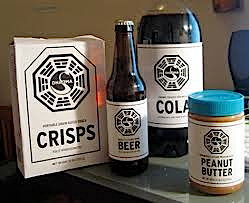Scroll Back Media
[Translations: Japanese]
When someone gives a speech you need to listen carefully because once the words are uttered, they are gone. Before the advent of recording technology, there was no backing up, no scrolling back to hear what was missed.
The great historical shift from oral communications to written ones gave the audience the possibility to scroll back to the beginning of a scroll, or to re-read it.
One of the prime qualities of books is the ability to repeat themselves for the reader, at the reader’s request, as many times as wanted. In fact to write a book that is re-read is the highest praise for an author. And in many ways authors have exploited this characteristic of books by writing them to be re-read. They may add plot points that gain meaning on second reading, hide irony that is only revealed on re-reading, or stuff it with details that require close study to decipher.
In the last century books were overtaken by movies and television as the cultural center. These screen-based media had much in common with books. Both were narrative driven, and linear. But unlike books, it was not easy to scroll back on the screen. Movies played out on the cinema screen once, and then were gone. Hopeful blockbusters were released to theaters on a certain day, played in your local theater for a month, and then were rarely seen again, except on late-night television decades later. Television was much the same. A show broadcasted on a schedule. You either watched it at the time, or you never saw it. It was expensive and not common to see a first released movie more than once, and only a few television episodes would reappear again as summer re-runs. And even then, to watch it you needed to schedule your attention to be present on the day and time when that show was due to run.
Because of this “oral” characteristic of movies and television, shows were engineered with the assumption they would only be seen once. That’s a wise assumption for any creation because it forces the narrative to convey as much as possible in the first impression. But it also diminishes it because so much can be crafted into second and third encounters.
First the VHS, then DVDs and TiVo, make it trivial easy to scroll back screenworks. If you want to see something again, you do. If you want to see only a snippet of a movie or television program, you do, at any time. This ability to rewind also applies to commercials and news. More than anything else, I think rewindability is what has turned commercials into the new art form. The ability to re-watch them has moved them out of the prison of ephemeral glimpses in the middle of ephemeral shows, to a library of shows that can be read and re-read like books. And then lent to others and discussed, analyzed and studied.
We are witnessing the same rewindability of screen-based news. TV news was once an ephemeral stream of stuff that was never meant to be recorded or analyzed — merely inhaled. Now it is rewindable. When we scroll back we can compare its veracity, its motives, its assumptions; we can share it, study it, and mix it.
The rewindability of movies is what makes the 100-hour serial movies such as Lost, or The Wire, or Battlestar Galactica possible, and enjoyable. There is too much to absorb over the years it takes to watch one, too many details ingeniously molded into them to be apparent on initial viewing, that being able to scroll back at any point is essential.

Music was transformed when it became recorded, rewindable. Live music was meant to be of the moment, and to vary from performance to performance. Before recordings, most people never heard the great symphonic works more than once in their life. The ability to scroll back to the beginning and hear music again — that exact performance — changed music forever. It become more precise, more dense, shorter, and crafted to be repeated.
Games now have scroll back functions that allow replays, or extra lives, a related concept. One can rewind the experience, although with a slightly different variation, again and again, until one masters that level.
We take scrolling back for granted now, but it changes our appreciation and use of media. There are still experiences in our lives that don’t have a scroll back, such as eating a meal. We can’t really replay the taste and smells of a meal. But if we could, that would certainly alter cuisine.
The perfect replication of media in terms of copies is well explored. But the perfect replication of media in terms of rewinding is less explored. As we begin to lifelog our daily activities, to capture our livestreams, more of our lives will be scrollable. I go back into my in and out mail boxes all the time, to scroll back some episode of my life. If we expect to scroll back, this may shift what we do the first time. It is still too early to tell whether the life that is Flickr’d and Facebook’d, will ever be re-examined, but that ability might change how it is lived in the future.


